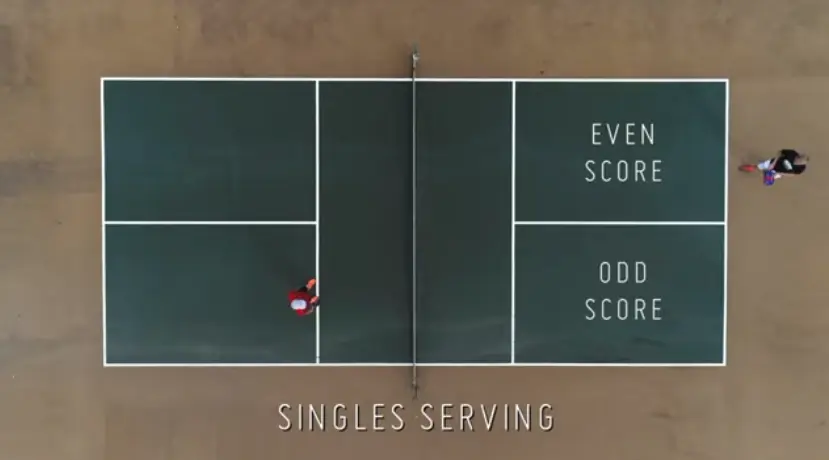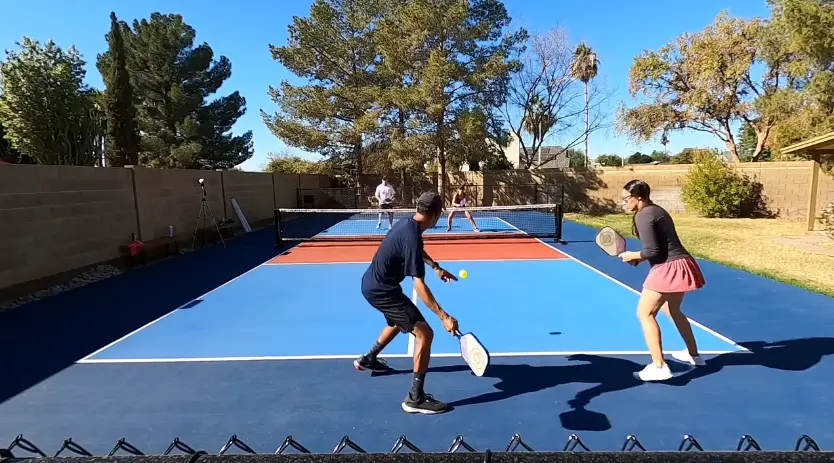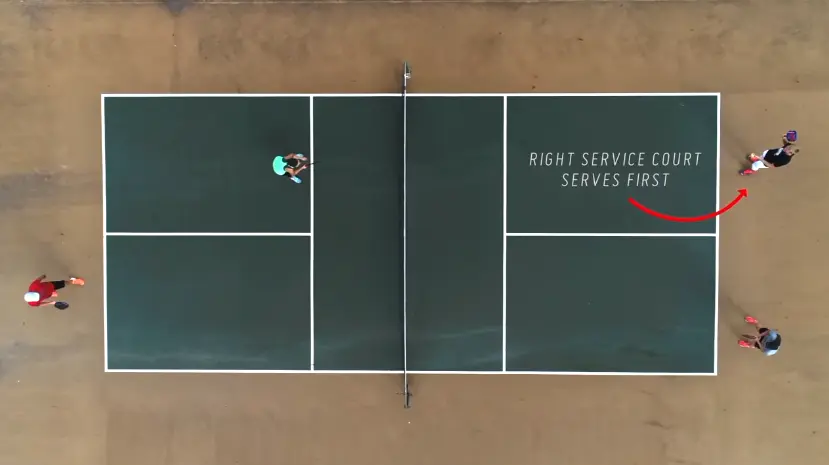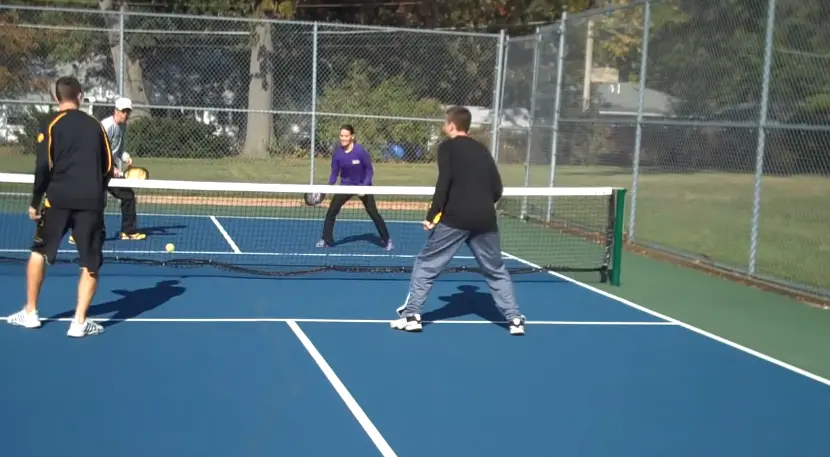Are you new to pickleball and finding the scoring rules a bit challenging? Don’t worry, I’ve got you covered! In this article, I’ll guide you through the ins and outs of keeping score in pickleball, helping you become a master on the court.
Whether you’re playing doubles or singles, accurately keeping score is crucial, and I’ll break down the scoring rules for both game types.

Do Not Forget to Read: Overall Best Pickleball Paddles
While scoring in pickleball may seem daunting at first, especially if you’re familiar with other sports like football or tennis, I’ll show you how it differs and its unique system.
With my tips and tricks, you’ll find that scoring in pickleball becomes straightforward and logical once you understand the rules. I’ll also address the challenges of keeping track of the score in this fast-paced game and provide guidance on serving rotations.
By the end of this article, you’ll have a clear understanding of how to keep score in pickleball, allowing you to enjoy the game without any confusion. So, let’s dive in and make scoring in pickleball a breeze!
How To Keep Score In Pickleball
Pickleball is typically played to 11 points, with a win by a margin of two. However, it’s worth noting that specific tournament settings or variations of the game may have different point limits.
The scoring team is the only team that can score points, and points are only awarded when the serving team wins a rally.
Doubles Pickleball Scoring

In doubles pickleball, each team consists of two players. Both players on the serving team have a chance to serve and receive.
Before each serve, it is customary for the server to announce the score, starting with their team’s score, followed by the opposing team’s score, and their server number.
The serving team starts with the player in the right service court serving first. If the serving team scores a point, the players switch places, and the first server serves from the left service court.
This alternating pattern of serving continues as long as the serving team keeps winning rallies. The server moves from the right side to the left side of the court each time their team scores a point.

Do Not Forget to Read: How To Make A Pickleball Practice Wall
If the serving team loses a rally, the second server takes over. If they lose another rally, the opposing team gains two chances to serve, which is known as a sideout. During a sideout, the first server on the opposing team calls out the score before serving.
The first server of a game serves from the right service court but starts as the second server to ensure fairness. The score at the beginning of a game is called out as “zero, zero, two,” indicating that neither team has scored, and the server is the second server.
The doubles pickleball score consists of three numbers: the serving team’s score, the receiving team’s score, and the server number.
When calling out the score, the serving team’s score is stated first, followed by the opposing team’s score, and finally, the server number.
Singles Pickleball Scoring

In singles pickleball, each player competes individually. The server serves from the right service court when their score is even and from the left service court when their score is odd. After losing a rally in singles, it results in a sideout, and the serve passes to the opponent.
The score in singles pickleball is called out as the server’s score followed by the receiver’s score. The server’s score dictates the serving position, not the receiver’s score. It is crucial to serve from the correct service court based on whether the score is even or odd.

The singles pickleball score consists of two numbers: the server’s score and the receiver’s score. When announcing the score, the server’s score is stated first, followed by the receiver’s score.
Ending the Game
The first team or player to score the winning point wins the game. In most cases, this is achieved by reaching 11 points with a win by two. However, it’s important to remember that different tournaments or settings may have specific rules regarding the point limit for winning.
Do Not Forget to Read: How Much Does It Cost To Build A Pickleball Court?
Stacking: An Advanced Strategy
Pickleball is a fast-paced and exciting sport that combines elements of tennis, badminton, and ping pong. In doubles pickleball, players employ various strategies to gain an advantage over their opponents.

One such strategy is known as “stacking,” which involves keeping partners on the same side of the court throughout the game.
This advanced tactic can be particularly useful when partners have opposite dominant hands, uneven skills, or when there are favorable matchups to exploit.
Positioning and Switching Sides
In pickleball, the server’s partner has the freedom to position themselves anywhere on the serving team’s side of the court, as long as the server is on the correct side.

Similarly, the receiver’s partner can be positioned anywhere on the receiving team’s side of the court, as long as the receiver is on the correct side.
This flexibility allows players to strategize and optimize their positions based on their individual strengths and the dynamics of the game.

During a rally, both the serving team and the receiving team can switch sides. However, it is essential to return to the correct positions at the end of the rally based on the score and the starting positions. Failing to do so can result in penalties and the loss of the rally.
Do Not Forget to Read: What Is The Average Age Of Pickleball Players
Calling the Score and Being Ready
When keeping score in pickleball, it is crucial to ensure that both the server and receiver are in the correct positions and ready to play before calling out the score.
If a player is not ready, they can raise their paddle or turn their back to the net to signal their unpreparedness. This action prevents the server from serving until all players are ready.
The server’s partner can call the score if the server cannot do so loudly enough. However, once the person calling the score is designated, they cannot be changed during the game.
If the wrong score is called before the third shot of the rally, play can be stopped to correct it without penalty. However, stopping play after the third shot of the rally due to a wrong score will result in a fault and the loss of the rally.
Additionally, stopping play to challenge a correctly called score will also result in a fault and the loss of the rally.
Seeking Clarification from the Referee
If there are any questions or doubts about the score or correct positions, players can ask the referee for clarification before the serve.
The referee is responsible for providing answers to these inquiries and re-calling the score if necessary. Clear communication and understanding of the score and positions contribute to a fair and well-played game.
Score Calling and Positioning in Doubles and Singles
In doubles pickleball, it is customary to call out the score before each serve. This practice helps everyone involved stay on the same page and prevents confusion.
Specifically, players starting on the right side are considered the “even” players, and the score is always even when they are on the right side. On the other hand, the player who started on the left side serves when the score is odd.

In singles pickleball, the scoring is slightly different. There is no third number in the score, and it simply indicates the number of points each player has won. Each player gets only one serve, and the opponent serves immediately after a fault.
As in doubles, it is essential to call out the serve in singles to avoid confusion and help others keep track of the score.
Winning a Game and Scoring Variations
To win a standard game in pickleball, a player or team must reach a score of 11 points. However, winning by a clear margin of two points is necessary.
This requirement ensures that players must establish a definitive lead to secure victory. It’s worth noting that tournament play and different competitions may adopt variations in scoring rules, setting the winning score at 15 or 21 points.
Understanding the Rules for a Smooth Game
Understanding and following the proper rules of pickleball is crucial to avoid controversies on the court.
By familiarizing yourself with the scoring rules, positioning requirements, and other regulations, you can ensure a fair and enjoyable experience for all players involved.
Regular play and practice are instrumental in internalizing the scoring rules and strategies, allowing you to navigate the game smoothly and effectively.
Final Word
In conclusion, keeping score in pickleball is an essential skill to master for a smooth and fair game. Whether you’re playing doubles or singles, understanding the scoring rules and calling out the score correctly is crucial.
Stacking, an advanced strategy in doubles, can provide an advantage by optimizing partner positions. Clear communication, proper positioning, and seeking clarification when needed contribute to a well-played game.
Remember to follow the specific scoring rules of the tournament or competition you’re participating in. By familiarizing yourself with the rules and practicing regularly, you’ll become a confident and skilled pickleball player.

Michael Stevenson
Hi, my name is Michael Stevenson and I’m a passionate pickleball player. I’ve been playing the game for many years and I’m pretty highly skilled at it. Pickleball is one of my favorite topics so naturally, I love to write about it.
Whether it’s tips for beginners, guides for experts, reviews of new paddles, or advanced playing techniques – if it relates to pickleball then I have something interesting to write about it. So if you’re looking for entertaining and informative information on the topic of pickleball, look no further than my written works!